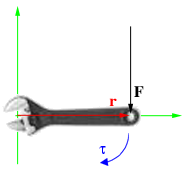Dungeness lighthouse
Old and new lighthouses in Kent
Photos and report by Mike Slocombe, July 2006
With its treacherous shifting banks of sand and shingle, Dungeness point has always been feared as a notorious black spot for mariners.
Advances in marine technology during the 16th century substantially increased the size and number of ships passing through the English Channel, with a corresponding increase in losses around Dungeness.
During one particularly bad winter gale it is said that over 1000 sailors lost their lives, along with many valuable cargoes.
Lighthouse view.
The first lighthouses
Beacons were originally lit on the land to warn passing sailors, but to combat this growing problem, a proper lighthouse was constructed at Dungeness in 1615.
Its owner, Sir Edward Howard, was empowered by King James I to levy tolls of one penny per ton from all ships passing it - something that didn't go down too well with fleet owners. Full Dungeness Lighthouse history [Trinity Hse]
A steady build up of shingle saw the sea disappearing into the distance, so in 1635 a new lighthouse ('Lamplough's Tower') was built closer to the water's edge. This stood some 110 feet high and lasted over 100 years.
As the sea continued to recede, it was necessary to build a third lighthouse in 1792.
Looking up.
Lighthouse number three
Standing 116ft tall, the lighthouse ('Samuel Wyatt's Tower') was built to a similar design as the Eddystone light, and was lit by 17 Argon lamps, magnified by silvered concave reflectors.
With the shingle bank continuing to grow in size and pushing the lighthouse further from the sea, work began on the present 'Old Lighthouse' in 1901.
Walking the 169 steps to the top. Each floor is linked by circular concrete stairs which hug the walls and sport decorative wrought iron banisters.
The Old Lighthouse ('The High Light Tower')
Built by Patrick & Co of London, the fourth lighthouse was ceremonially opened by His Majesty, The Prince of Wales (later George V) in 1904, with its 150ft height making it one of tallest lighthouses in the UK.
Its intermittent light, flashing every 10 seconds, was visible for around 18 miles.
Sporting a steel roof and slate floor, the Top Lantern Room housed the massive circular lens. Weighing two tons, the whole assembly smoothly floated on a bed of mercury.
The lighthouse was operational between 1904 and 1960, before being superceded by the fifth lighthouse, situated about half a mile away.
This new lighthouse had to be built because the buildings of the nearby Dungeness Power Stations were found to be obscuring some of the light.
A scene inside the Lens Room on the second floor.
Looking through the lens.
Close up detail.
In the Top lantern Room is this brass plaque indicating True North.
Curious handle on the small, low door that leads to the balcony at the top of the lighthouse.
The new lighthouse in the distance.
Looking down.
Dungeness Power Stations from the balcony.
Looking north to the new lighthouse.
New lighthouse
Resplendent in its smooth, clean, modern lines and black and white paint job, lighthouse number five was constructed in 1961.
Officially opened by H.R.H. The Duke of Gloucester, the 43m high lighthouse was brought into operation on 20th November, 1961 and was the first one to incorporate the Xenon electric arc lamp.
The new Dungeness Lighthouse is visible for 27 sea miles. Converted to automatic operation in 1991, it is currently monitored and controlled from the Trinity House Depot at Harwich.
Top of the new lighthouse which is powered by 4 Banks Of 4 X 200 watt sealed beam lamps which flash white light for 5 seconds of every 30 seconds.
Overall view of the slim lighthouse.
The tower rises from a white concrete base in the form of a spiral ramp.
Zuhaf Gambotu
-
1896 yılında ‘Germania’ AG, Kiel firması tarafından tasarlanıp Osmanlı
Donanmasında göreve başladı. Ocak 1915 ayı itibariyle Çanakkale Boğazı
civarında k...
9 yıl önce
































































































.jpg)


















































































































